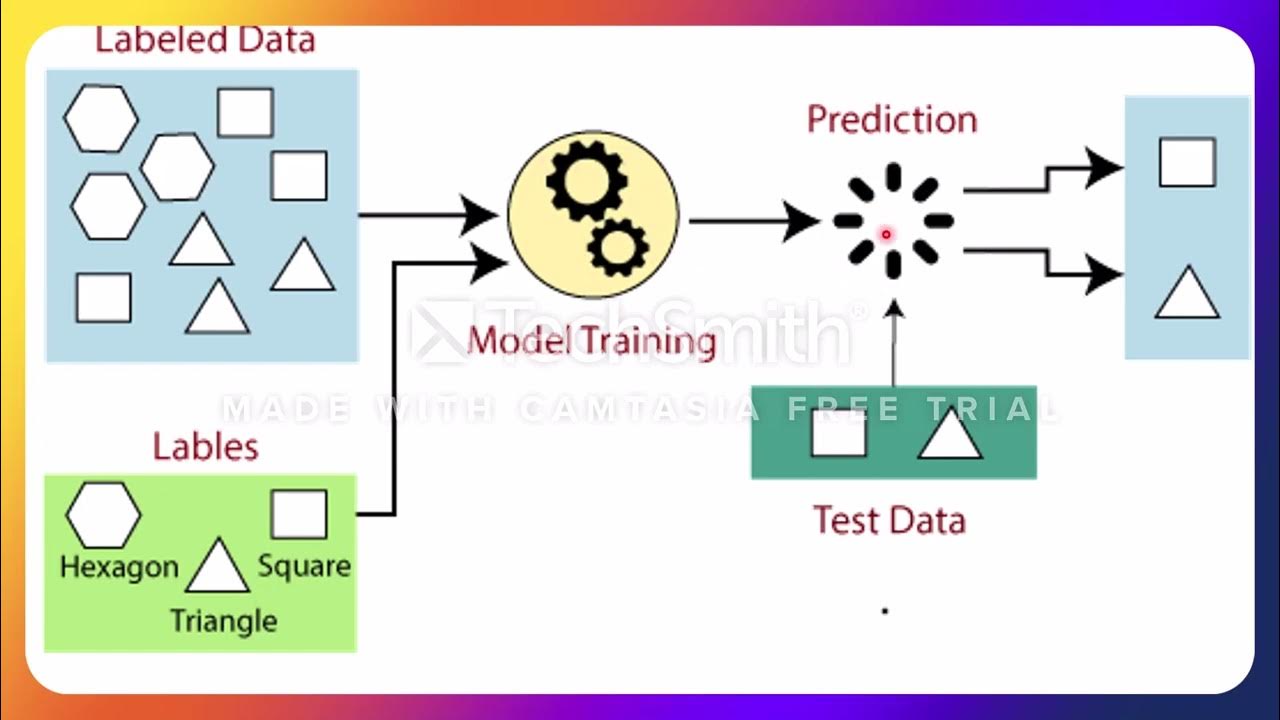Aprendizado de Máquina: Supervisionado e Não Supervisionado
Summary
TLDRIn this video, Ademir Ribeiro Prates introduces the basics of machine learning, focusing on supervised and unsupervised learning. He explains supervised learning, where a response variable is predicted using regression or classification models, and highlights the importance of understanding dependent and independent variables. The video also covers unsupervised learning, where no response variable is involved, and data patterns or groupings are discovered, such as in customer profiling. The key difference between the two types is the presence of a response variable in supervised learning and its absence in unsupervised learning.
Takeaways
- 😀 Supervised machine learning involves a response variable that we aim to understand or predict.
- 😀 In supervised learning, we analyze data tables where one column (the response variable) is the focus.
- 😀 An example of supervised learning is predicting whether employees will resign based on various factors.
- 😀 In statistics, the response variable is known as the dependent variable, and it depends on other explanatory (independent) variables.
- 😀 Supervised machine learning can be categorized into two types: regression and classification.
- 😀 Regression in supervised learning is used when the response variable is numerical, such as predicting sales figures.
- 😀 Classification in supervised learning applies when the response variable is categorical, like predicting if a customer will buy a product (yes/no).
- 😀 Binary variables (such as 0 and 1) are often treated as categorical variables in classification tasks, not numerical ones.
- 😀 When a numeric response variable, like age, is grouped into categories, it becomes a classification problem, not regression.
- 😀 Unsupervised machine learning, unlike supervised, does not have a specific response variable; instead, it focuses on finding patterns and relationships in data.
- 😀 A common use of unsupervised machine learning is identifying customer profiles or segmenting data to find similarities between different groups.
Q & A
What is the primary difference between supervised and unsupervised machine learning?
-The main difference is that supervised machine learning involves a response variable (the target or dependent variable), which the model tries to predict. In contrast, unsupervised machine learning doesn't use a response variable and focuses on finding patterns or groupings in the data.
What is a response variable in the context of supervised machine learning?
-A response variable is the target or dependent variable that the model is trying to predict or classify. It is the focus variable that we want to understand or predict based on other input variables.
Can you provide an example of supervised machine learning?
-An example would be predicting employee resignations. The response variable would be whether an employee resigns (yes/no), and the model would use other variables, like job satisfaction, tenure, etc., to predict this outcome.
What are the two types of supervised machine learning models?
-The two types of supervised machine learning models are regression and classification. Regression models are used when the response variable is numerical, while classification models are used when the response variable is categorical.
How does regression differ from classification in supervised learning?
-In regression, the response variable is numerical (e.g., predicting salary), while in classification, the response variable is categorical (e.g., predicting whether an email is spam or not).
What is an example of a binary classification problem?
-A binary classification problem could involve predicting whether an email is spam (1) or not spam (0), where the response variable consists of two categories, often represented as zeros and ones.
How does the transformation of a numeric variable, like age, affect the type of machine learning model used?
-If a numeric variable like age is divided into categories (e.g., 18-25, 26-35), it becomes a categorical variable. In this case, a classification model would be used instead of a regression model.
What is the role of independent variables in supervised learning?
-Independent variables, also known as explanatory variables, are the input features that help predict or explain the response variable. They provide the data that the model uses to make predictions or classifications.
What is the goal of unsupervised machine learning?
-The goal of unsupervised machine learning is to explore the data and find hidden patterns, groupings, or relationships without having a specific response variable to predict or classify.
How can unsupervised machine learning be applied in a business context?
-Unsupervised machine learning can be used for customer segmentation or profiling. For instance, companies can use unsupervised learning to identify different customer behavior patterns or group similar customers together, which helps in marketing and decision-making.
Outlines

This section is available to paid users only. Please upgrade to access this part.
Upgrade NowMindmap

This section is available to paid users only. Please upgrade to access this part.
Upgrade NowKeywords

This section is available to paid users only. Please upgrade to access this part.
Upgrade NowHighlights

This section is available to paid users only. Please upgrade to access this part.
Upgrade NowTranscripts

This section is available to paid users only. Please upgrade to access this part.
Upgrade NowBrowse More Related Video
5.0 / 5 (0 votes)





